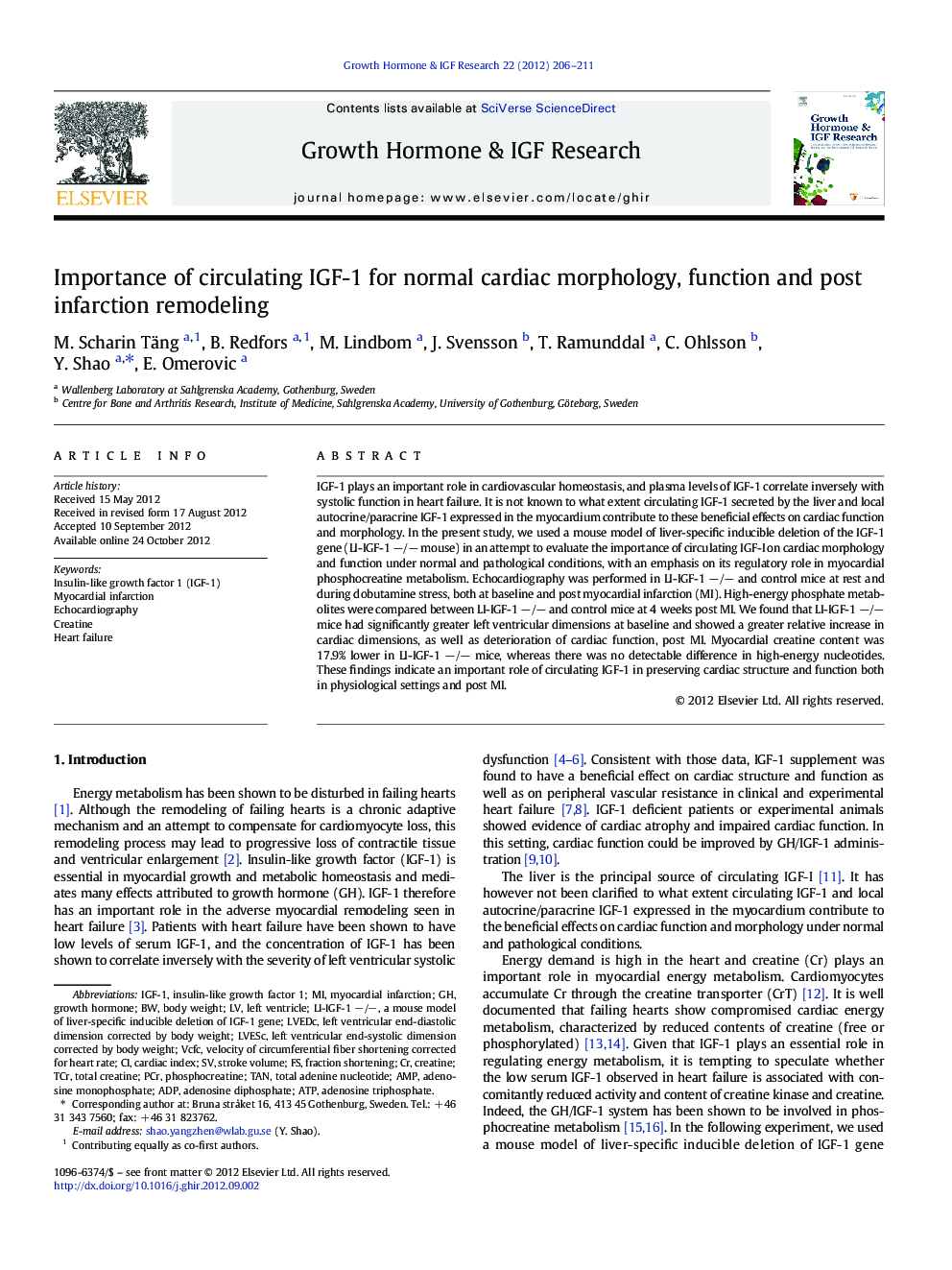| Article ID | Journal | Published Year | Pages | File Type |
|---|---|---|---|---|
| 2802918 | Growth Hormone & IGF Research | 2012 | 6 Pages |
IGF-1 plays an important role in cardiovascular homeostasis, and plasma levels of IGF-1 correlate inversely with systolic function in heart failure. It is not known to what extent circulating IGF-1 secreted by the liver and local autocrine/paracrine IGF-1 expressed in the myocardium contribute to these beneficial effects on cardiac function and morphology. In the present study, we used a mouse model of liver-specific inducible deletion of the IGF-1 gene (LI-IGF-1 −/− mouse) in an attempt to evaluate the importance of circulating IGF-I on cardiac morphology and function under normal and pathological conditions, with an emphasis on its regulatory role in myocardial phosphocreatine metabolism. Echocardiography was performed in LI-IGF-1 −/− and control mice at rest and during dobutamine stress, both at baseline and post myocardial infarction (MI). High-energy phosphate metabolites were compared between LI-IGF-1 −/− and control mice at 4 weeks post MI. We found that LI-IGF-1 −/− mice had significantly greater left ventricular dimensions at baseline and showed a greater relative increase in cardiac dimensions, as well as deterioration of cardiac function, post MI. Myocardial creatine content was 17.9% lower in LI-IGF-1 −/− mice, whereas there was no detectable difference in high-energy nucleotides. These findings indicate an important role of circulating IGF-1 in preserving cardiac structure and function both in physiological settings and post MI.
